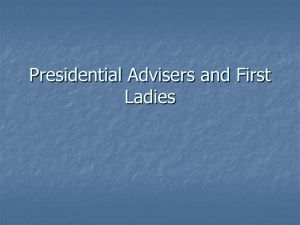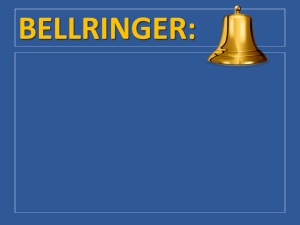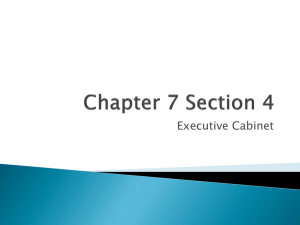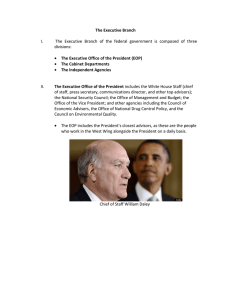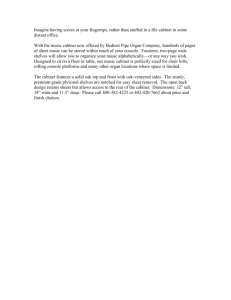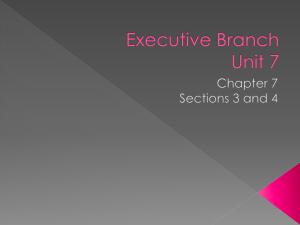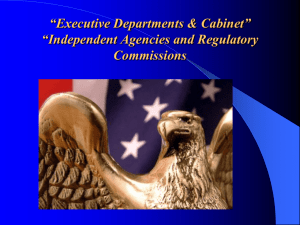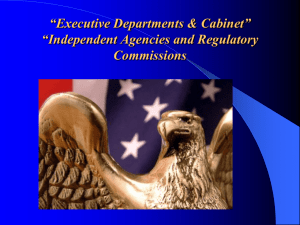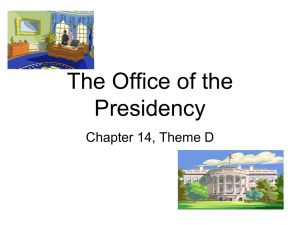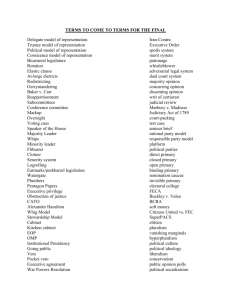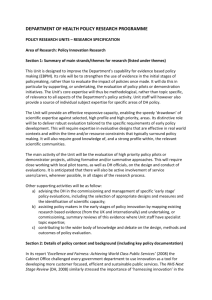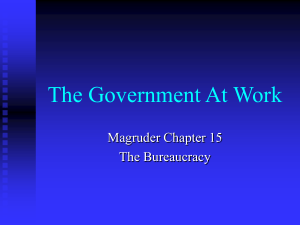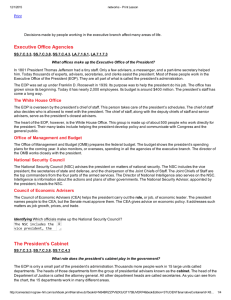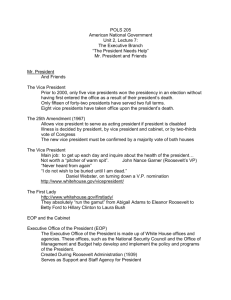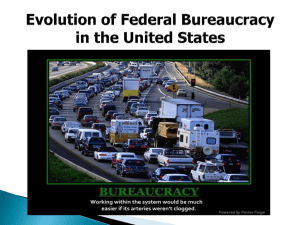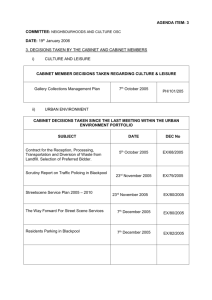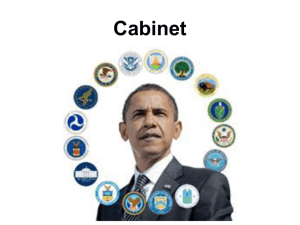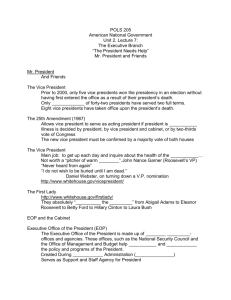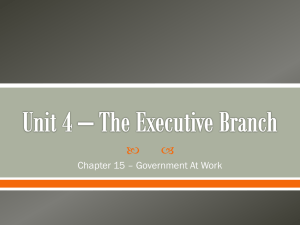Presidential Advisers and Executive Agencies
advertisement
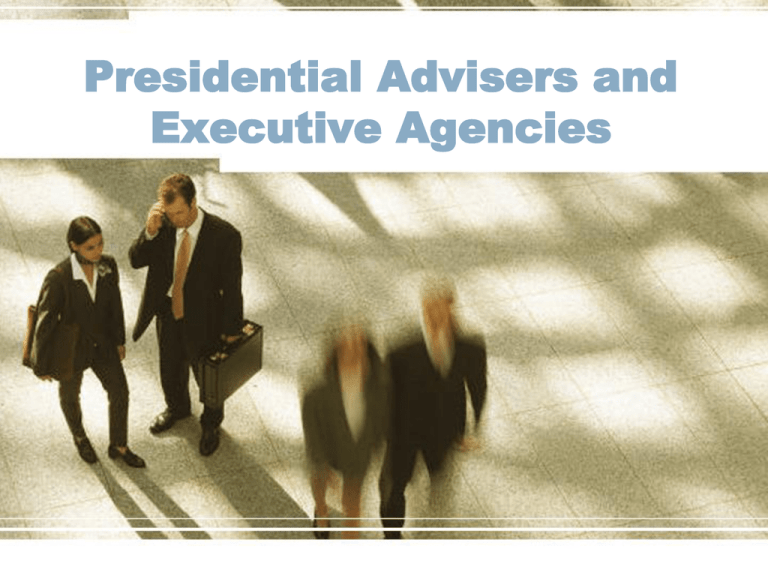
Presidential Advisers and Executive Agencies Executive Office of the President • The employees of the Executive Office of the President (EOP) help the president by preparing reports, helping to write bills, and checking the work of various agencies. White House Staff • The people of the White House Office work directly for the president. • The most powerful member of the White House staff is the Chief of Staff. • The White House Staff screens the flow of information and people to the president. Office of Management and Budget (OMB) • The Office of Management and Budget (OMB) prepares the federal budget and monitors government spending. • The federal budget lays out the administration’s plans and goals for the coming year. The National Security Council • The National Security Council helps the president coordinate the military and foreign policy. • It includes the vice president, the secretaries of state and defense, and the chairman of the Joint Chiefs of Staff, a group made up of the top commander of each of the armed services. • The NSC supervises the Central Intelligence Agency (CIA). Office of Homeland Security • George W. Bush created the Office of Homeland Security to deal with terrorist activities. • It includes members of the cabinet and of agencies such as the Federal Bureau of Investigation (FBI) and Border Patrol. Council of Economic Advisers • The three members of the Council of Economic Advisers advise the president about complex economic matters, such as employment, tax policy, inflation, and trade. http://www.whitehouse.gov/cea/ Cabinet • The cabinet is a group of advisers that includes the heads of the 14 top-level executive departments. • The head of the Department of Justice is called the attorney general. • The other department heads are called secretaries. http://www.whitehouse.gov/government/cabinet.html The Federal Bureaucracy • The executive branch is shaped like a pyramid. • Directly below the president are the cabinet secretaries and their departments. • At the next level are hundreds The President of agencies. • Together, the agencies and employees of the executive The Cabinet branch are known as the federal bureaucracy. • The workers are called bureaucrats, or civil servants. Agencies Independent agencies • Independent agencies are not part of the cabinet, but they are not independent of the president. • The three types are: executive agencies, regulatory commissions, and government corporations. Executive Agencies • Executive agencies deal with certain specialized areas. • The National Aeronautics and Space Administration (NASA) is one example. Government Corporations • Government corporations are like private businesses, except that the government owns and runs them. • Like businesses, they charge for their services, but they are not supposed to make a profit. • The United States Postal Service is a government corporation. Regulatory Commissions • Unlike other independent agencies, regulatory commissions do not report to the president. • The president appoints members, but only Congress can remove them through impeachment. • Regulatory commissions protect the public by making and enforcing rules for certain industries. Political Appointees • Top department jobs generally go to political appointees—people whom the president has chosen because they have ability or were supporters of the president’s election campaign. • Their employment usually ends when the president leaves office. Spoils System • Before 1883 government jobs went to people as a reward for their political support. • Abuses of this spoils system led Congress to pass the Pendleton Act, also known as the Civil Service Reform Act of 1883. • This law limited the number of jobs the president could give to friends and backers. • It also created the civil service system. Merit System • The civil service system is a merit system. • Government officials hire new workers from lists of people who have passed the test or otherwise met civil service standards.
